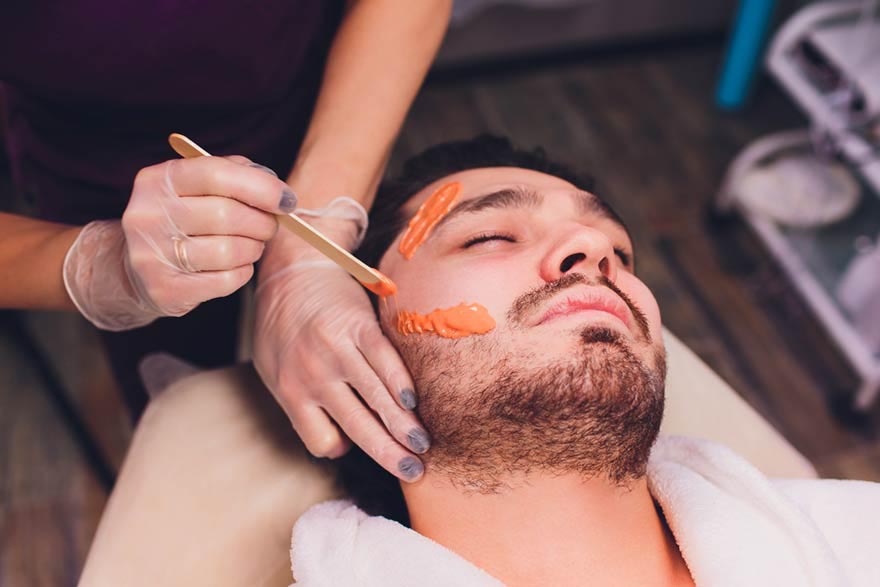Discover the Deluxe of LavishRe Beauty Treatments
Discover the Deluxe of LavishRe Beauty Treatments
Blog Article
Professional Shaving Providers: A Comprehensive Guide to Revealing the Advantages and Advantages of Various Waxing Techniques
From the precision of Brazilian shaving to the all-natural attraction of sugaring, the world of waxing deals a range of options for those seeking a hair removal solution that is both durable and efficient. As we dive into the ins and outs of hard wax versus soft wax and discover the important ideas for post-wax treatment, an extensive understanding of these methods emerges, dropping light on their transformative potential.
Types of Shaving Techniques
Different types of waxing techniques are utilized by professionals to efficiently eliminate unwanted hair from different components of the body. One common method is strip waxing, where a slim layer of heated wax is used to the skin and then quickly gotten rid of making use of a fabric or paper strip. This method appropriates for bigger areas like arms and legs. On the other hand, hot waxing involves using a thicker layer of wax to the skin, allowing it to solidify and cool down prior to being managed without the demand for a strip. Hot wax is commonly chosen for extra delicate areas such as the swimwear line and face. In addition, there is additionally a technique called sugaring, which utilizes a sugar-based paste to eliminate hair in the instructions of its growth, leading to much less pain and less in-grown hairs. These numerous shaving techniques offer professionals with functional alternatives to accommodate the particular requirements and choices of their customers.
Advantages of Brazilian Waxing
One of the most desired waxing solutions by customers looking for a smooth and hair-free skin experience is Brazilian shaving, known for its careful hair elimination strategy and durable results. Brazilian waxing offers several advantages that set it apart from other hair removal techniques. In addition, Brazilian waxing helps exfoliate the skin, eliminating dead skin cells and leaving the skin sensation soft and renewed.
Benefits of Sugaring
Unlike wax, which can stick to the skin and create irritability, sugaring paste commonly just binds to the hair, decreasing the risk of soreness and pain. Furthermore, sugaring is applied at body temperature level, removing the opportunity of burns that can happen with hot wax.
Additionally, sugaring can lead to less breakage and ingrown hairs compared to waxing, as the paste is applied in the instructions of hair growth and removed in the opposite instructions, resulting in smoother skin. Overall, the benefits Source of sugaring make it a prominent option for those looking for a natural and gentle hair elimination method.
Contrast: Difficult Wax Vs. Soft Wax
Having checked out the advantages of sugaring as an all-natural hair removal approach, it is necessary to currently examine the differences in between difficult wax and soft wax to recognize their respective advantages and applications in specialist waxing solutions.
Hard wax, likewise referred to as stripless wax, is a prominent selection for delicate locations like the face, underarms, and swimwear line. It is applied in a thick layer which solidifies as it cools. Unlike soft wax, difficult wax does not call for strips for elimination; it is removed straight. This kind of wax is much less unpleasant as it just abides by the hair, not the skin, reducing the risk of inflammation. On the other hand, soft wax, or strip wax, is applied very finely and gotten rid of utilizing cloth or paper strips. It is ideal for bigger areas like legs, arms, and back. Soft wax works in ordering great hairs and is preferred for reliable and quick hair removal. Eventually, picking in between tough wax and soft wax relies on the customer's try this out level of sensitivity, the targeted location, and the wanted outcomes in professional waxing services.
Tips for Post-Wax Care

Final Thought
In verdict, expert waxing solutions offer different methods such as Brazilian waxing, sugaring, hard wax, and soft wax. Additionally, appropriate post-wax treatment is vital to maintain smooth and healthy skin after hair elimination therapies.

On the other hand, hot waxing involves using a thicker layer of wax to the skin, enabling it to set and cool down before being pulled off without the need for a strip. Unlike soft wax, hard wax does not call for strips for removal; it is peeled off directly. Inevitably, picking in between difficult wax and soft wax depends on the client's level of sensitivity, the targeted location, and the preferred results in specialist waxing solutions.
In final thought, professional shaving services use numerous methods such as Brazilian shaving, sugaring, difficult wax, and soft wax.
Report this page